Time:
Bib found:
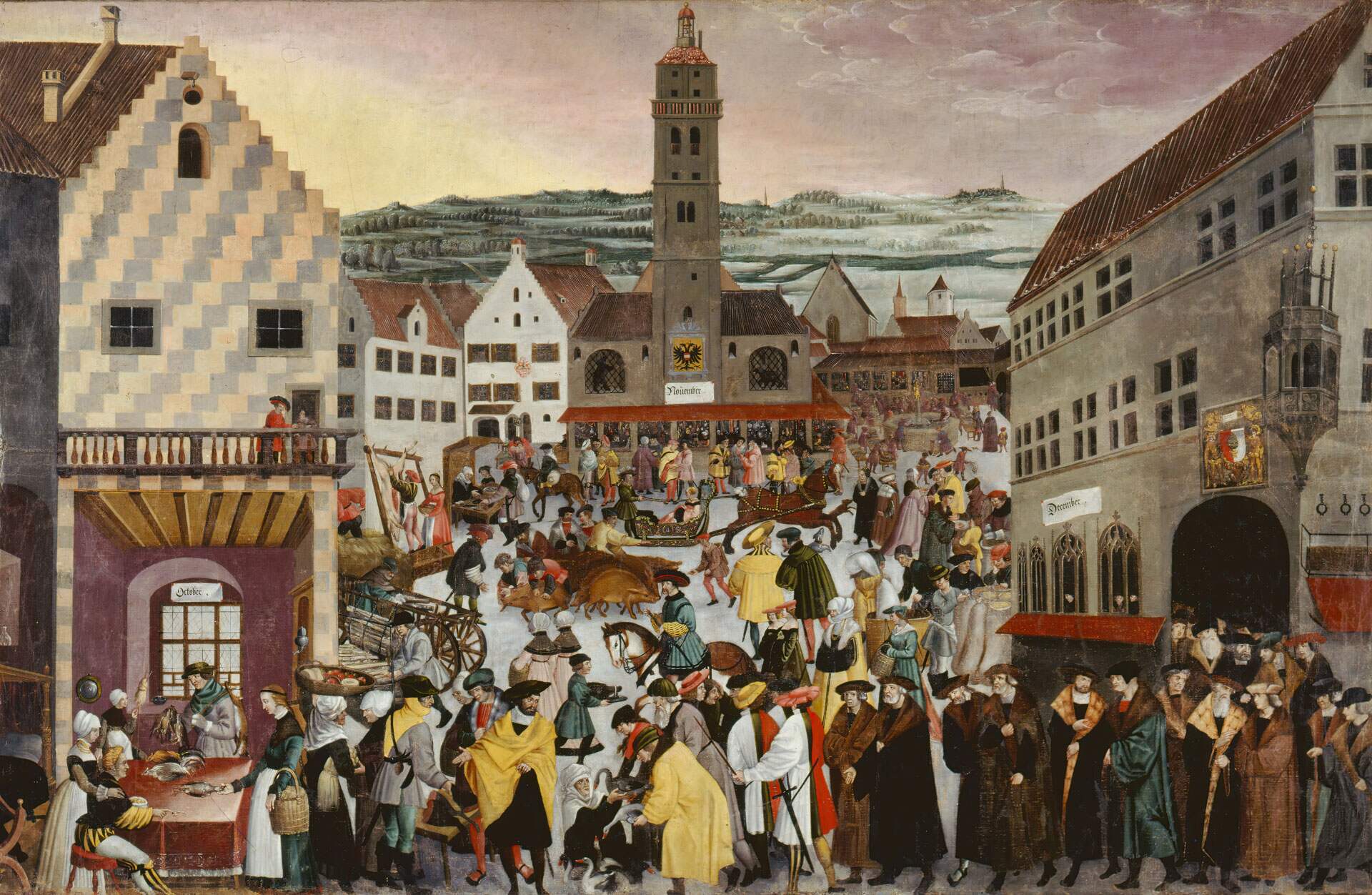
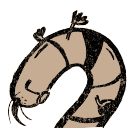
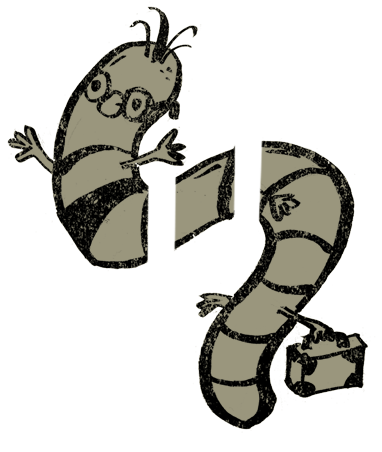
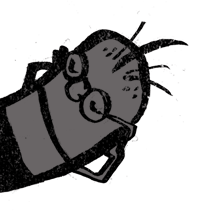
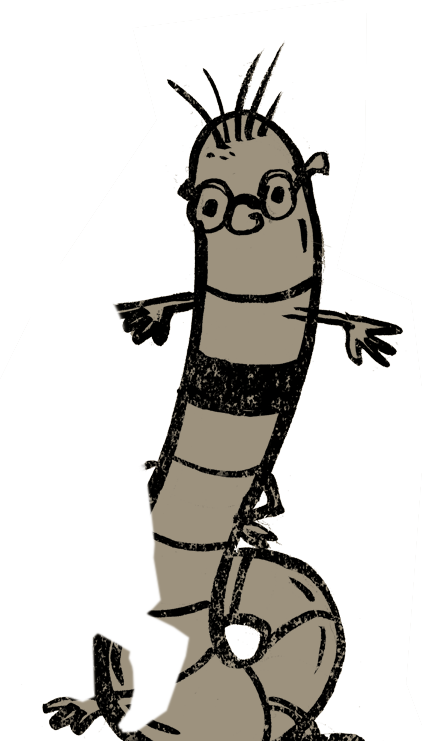
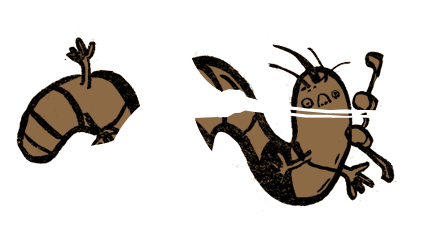
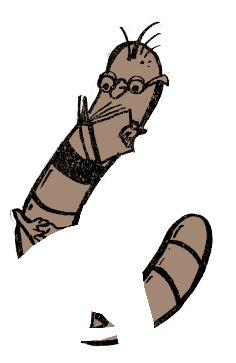
Heinrich Vogtherr the Younger, Labours of the Month with the Perlach Tower and the Old Town Hall, c.1540
Well done, you’ve found all my hiding places.
If you are interested in further adventures with me, come to the exhibition. A booklet there will offer you lots of exciting things to do. See you soon in the museum!
Time:
Bib found:
Perlach Tower – a mighty watchtower
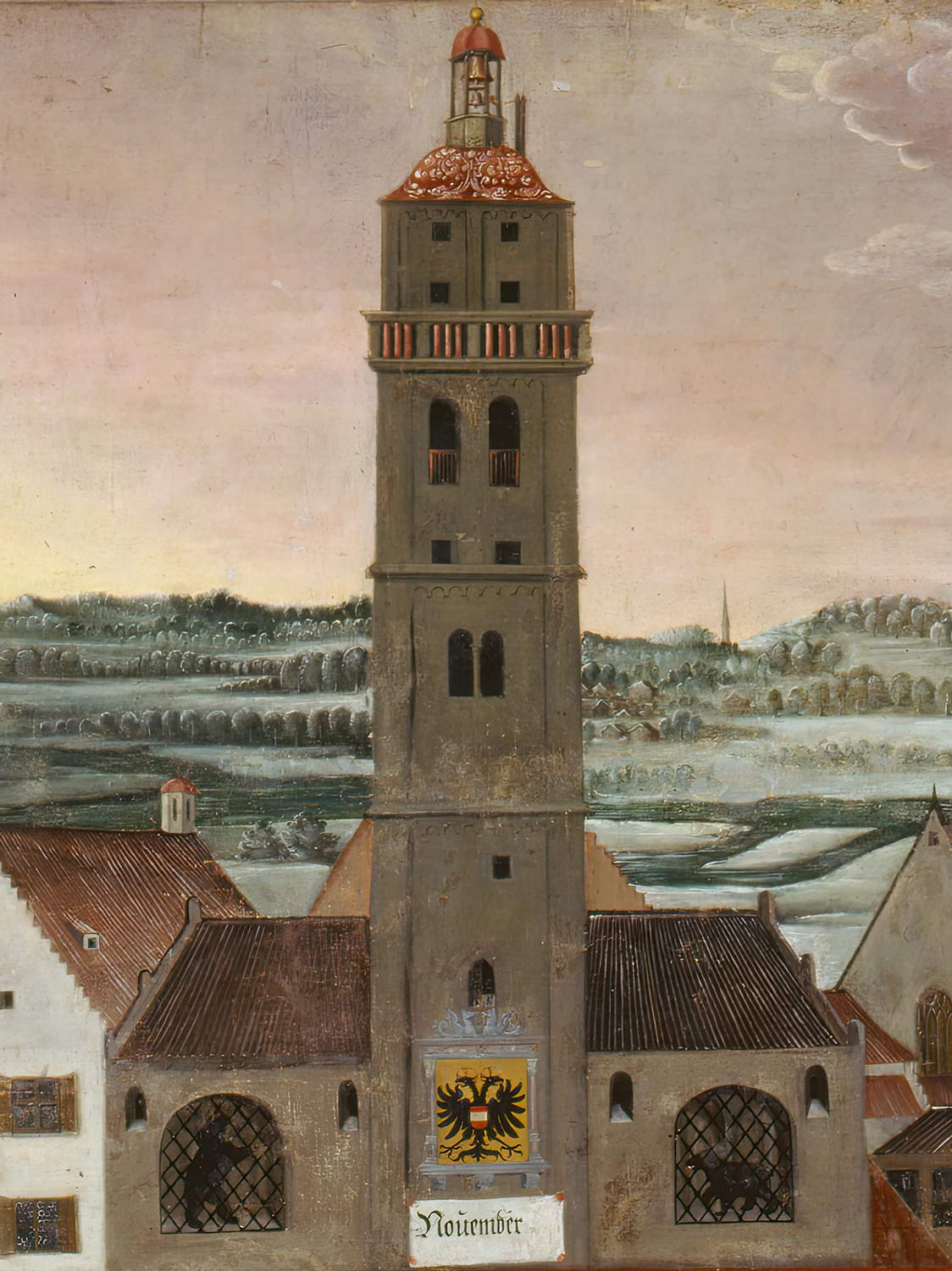
Detail from: Heinrich Vogtherr the Younger, Labours of the Month with the Perlach Tower and the Old Town Hall, c.1540
The bell on top of the tower used to be rung whenever the city was in danger. The double-headed eagle on the yellow sign at the bottom of the tower was the symbol of the Emperor and his Empire, which Augsburg belonged to. You can see real bears inside the large barred openings on either side of the sign. Happily, no animals are locked up there any longer!
‘Phew, quite a climb, but the view from up here is really fantastic!’
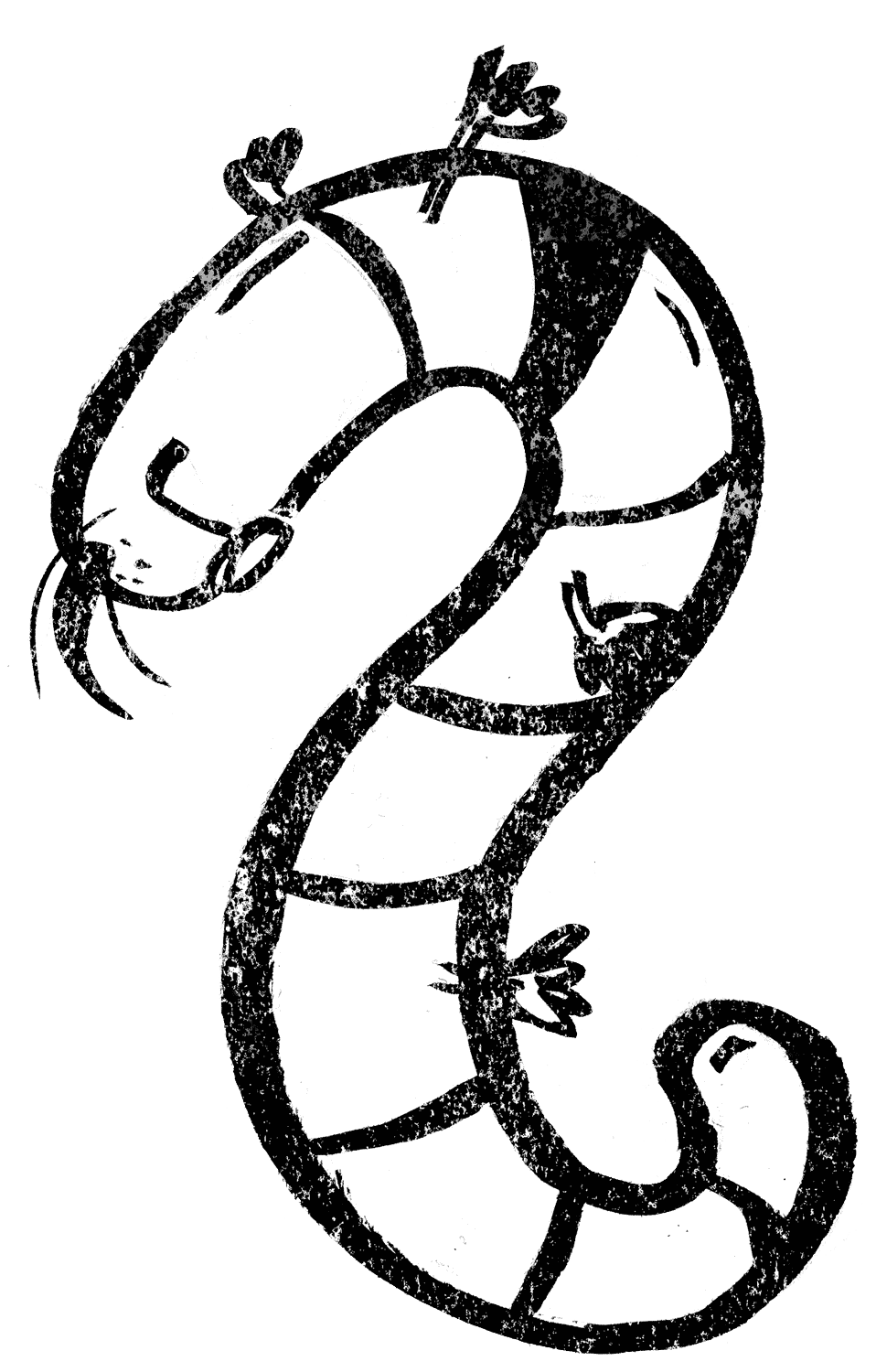
Old Town Hall – a gathering of wealthy city councillors
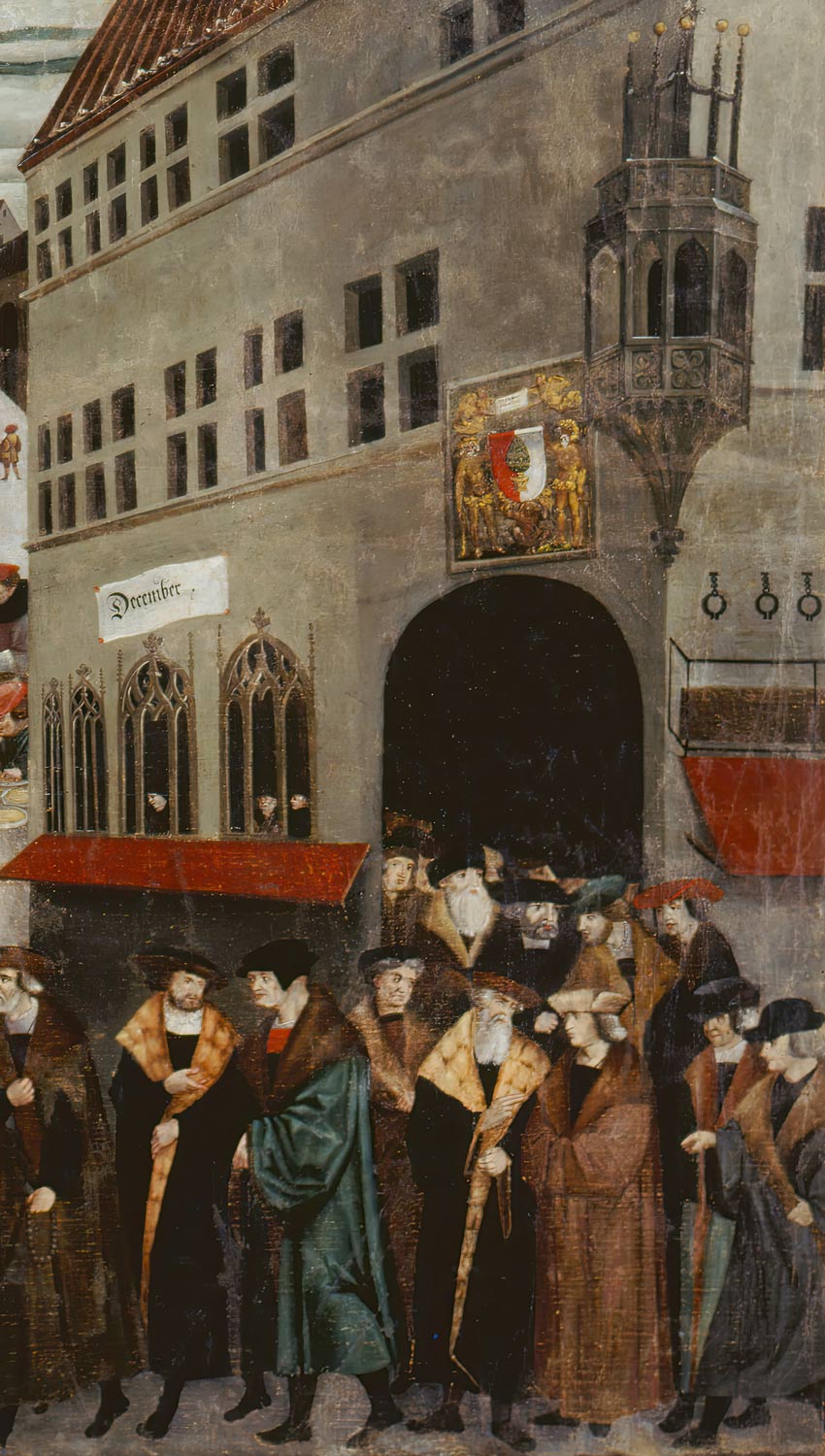
Detail from: Heinrich Vogtherr the Younger, Labours of the Month with the Perlach Tower and the Old Town Hall, c.1540
‘Hear ye, hear ye!’
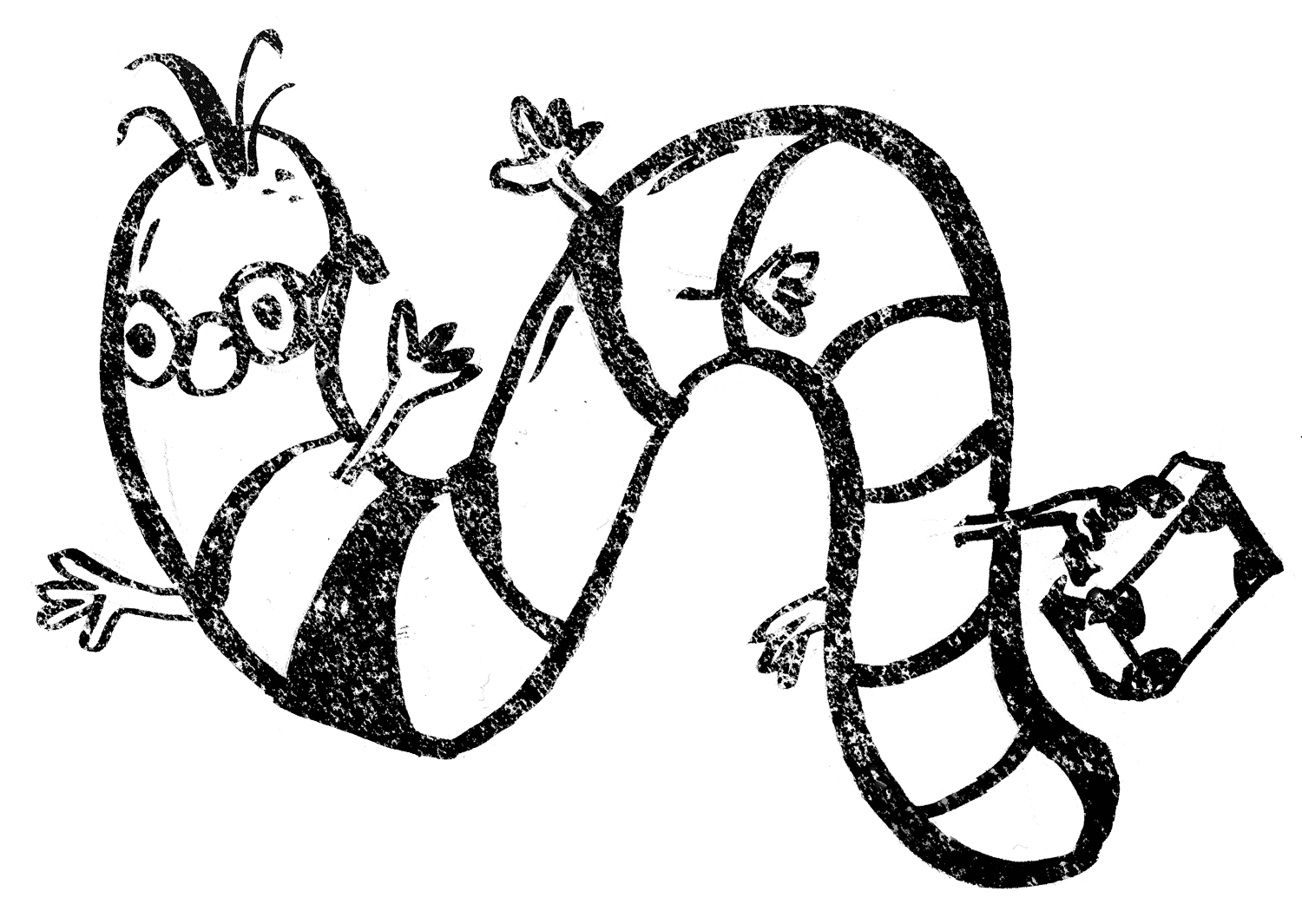
Laws that had been passed in the town hall were proclaimed from these windows. Wealthy lords – many of whom had travelled from afar – made important decisions here. We see a number of them leaving the town hall. They are swathed in warm fur coats.
Women or poor people were not allowed to take part in the meetings in the town hall, even though they too were affected by many of the decisions made there. The sign above the doorway shows the coat of arms of the city of Augsburg with its large green pine cone.
In the middle of town – living well
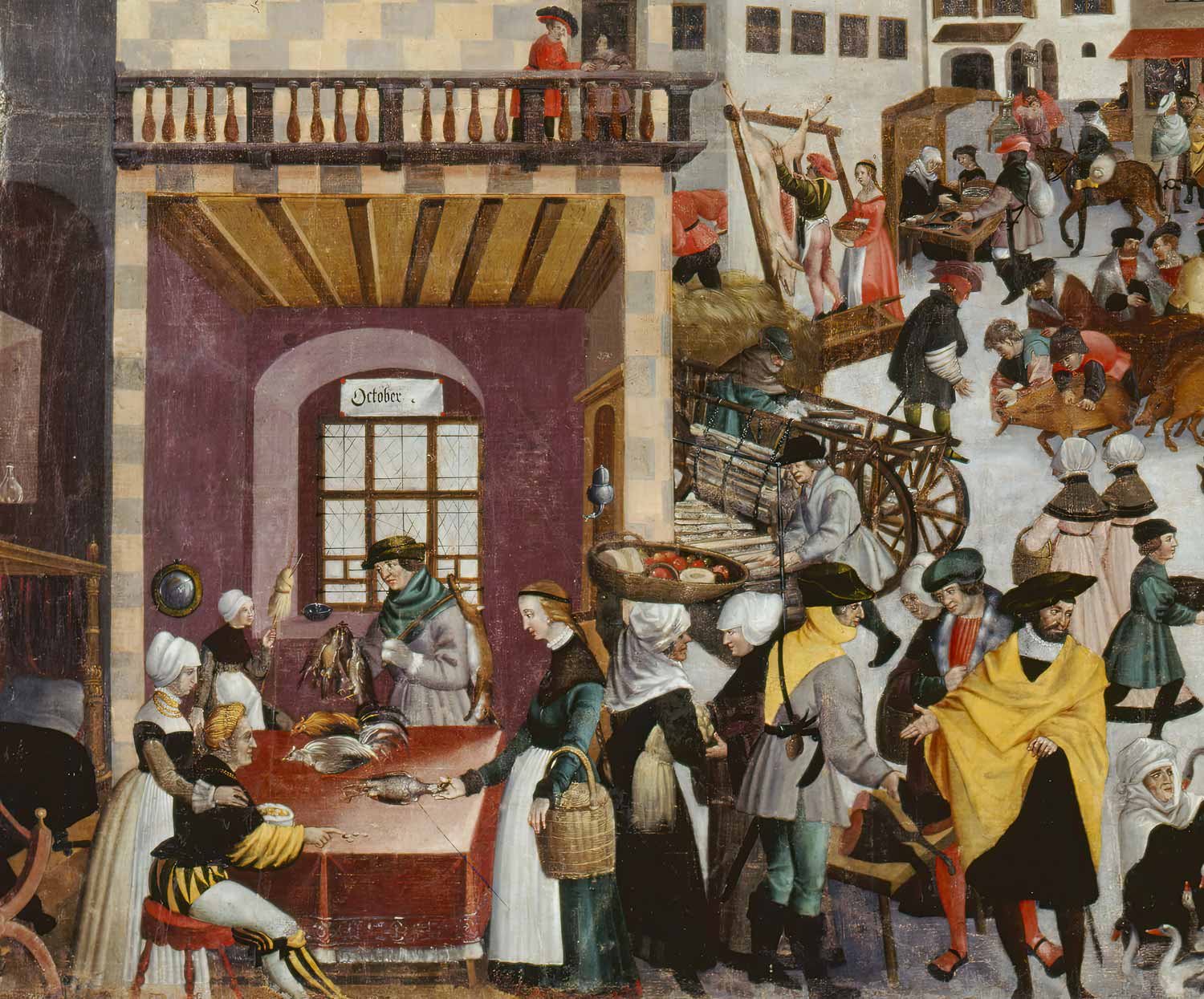
Detail from: Heinrich Vogtherr the Younger, Labours of the Month with the Perlach Tower and the Old Town Hall, c.1540
‘It’s cosy here in bed ˗ all I want now is a good book!’
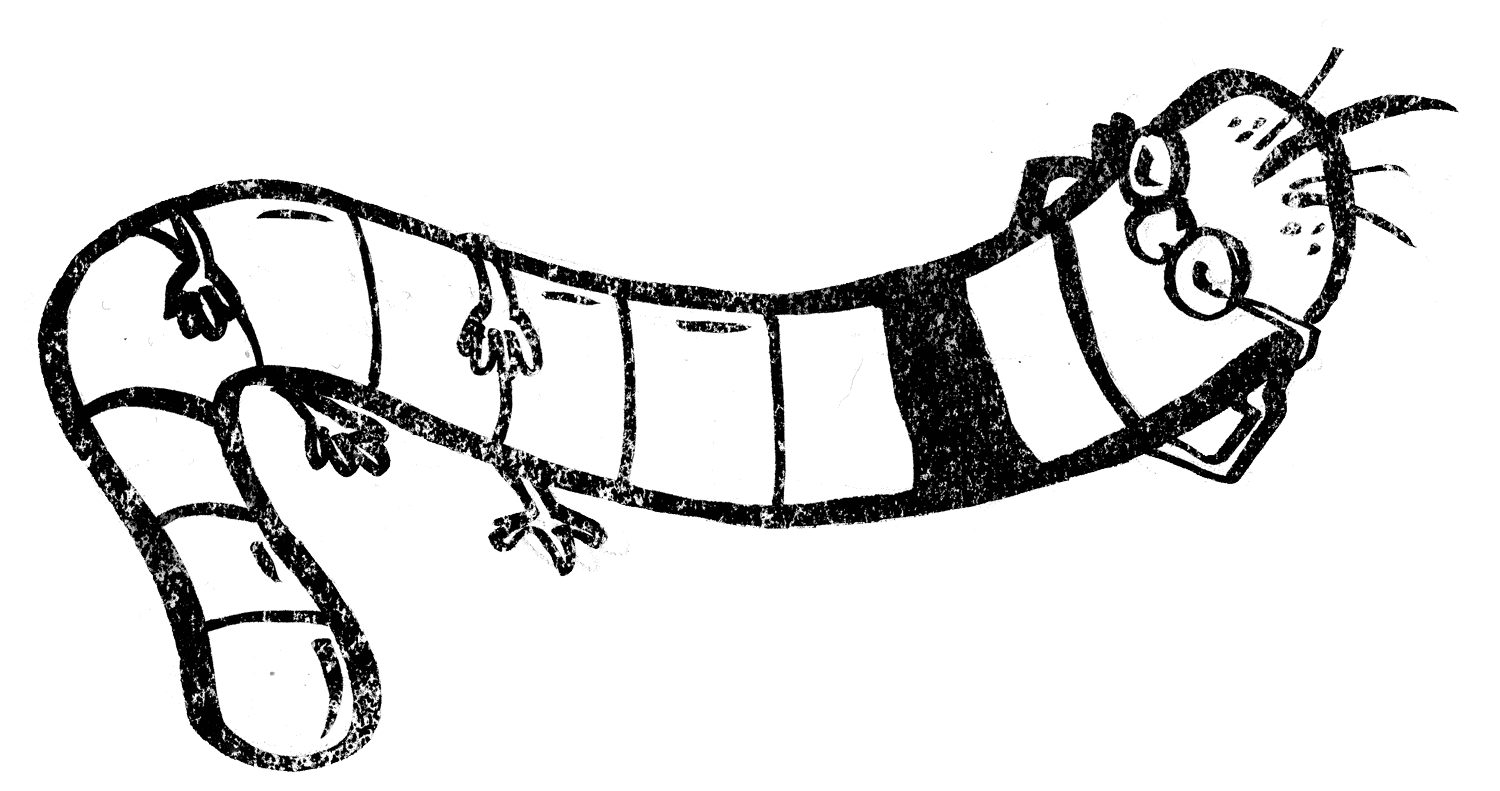
Next door, people are busily engaged in buying and selling. The man seated at the table on the left points at a few coins. Poultry is being pushed across the table. In front of the building other items of food are on sale: a woman carries a fruit basket on her head, further to the right geese are being sold, and behind them we can see some pigs.
In Augsburg those with enough money could buy delicious food – but many people had to go hungry at times.
Fashion show in the city – a colourful bustle
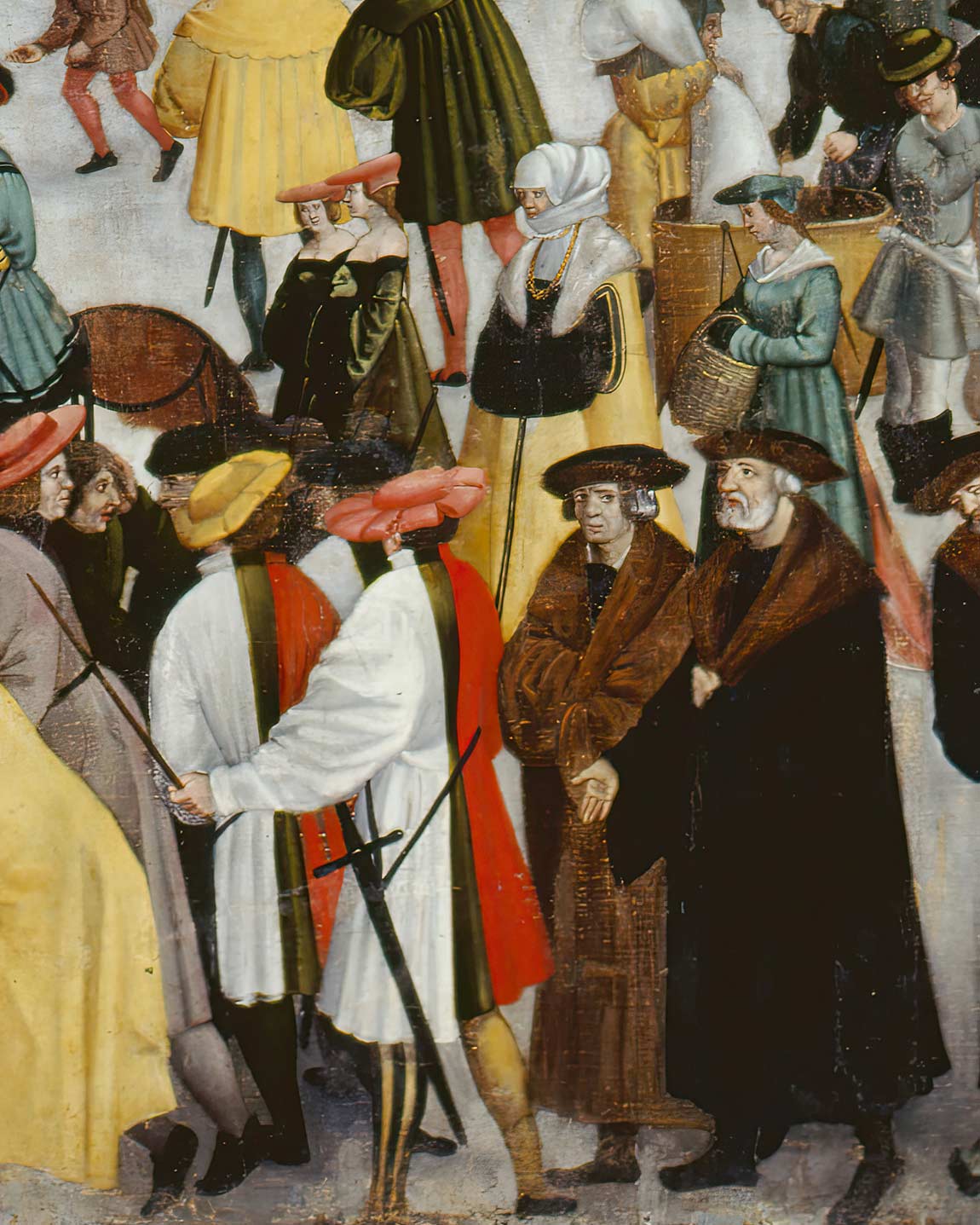
Detail from: Heinrich Vogtherr the Younger, Labours of the Month with the Perlach Tower and the Old Town Hall, c.1540
‘Smart hats, and just look at the stockings …’

Particularly magnificent clothing was made in Augsburg. Women and men wore big, loose coats, open at the front.
On the right, behind the men in white, green and red, we see a lady dressed in yellow with a gold chain around her neck. She is warming her hands by keeping them in her wide black coat sleeves. Her hair is hidden beneath a bonnet, as was usual for married women. Back then a strict dress code told you who was allowed to wear what.
Cool sleighs – in the fast lane
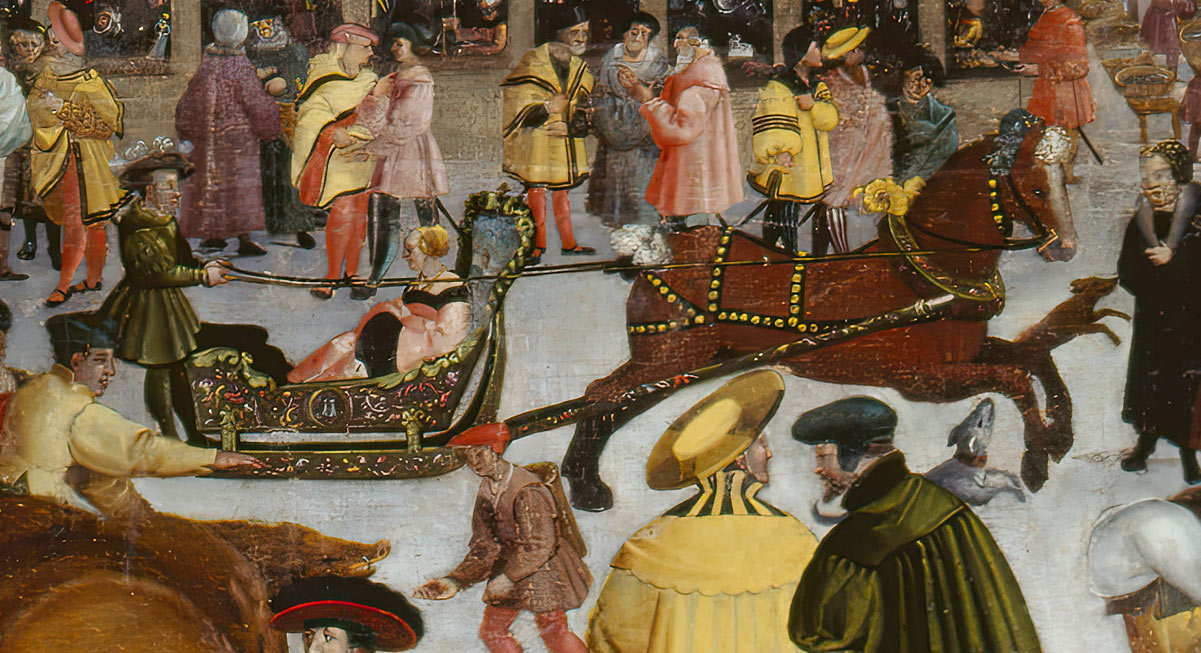
Detail from: Heinrich Vogtherr the Younger, Labours of the Month with the Perlach Tower and the Old Town Hall, c.1540
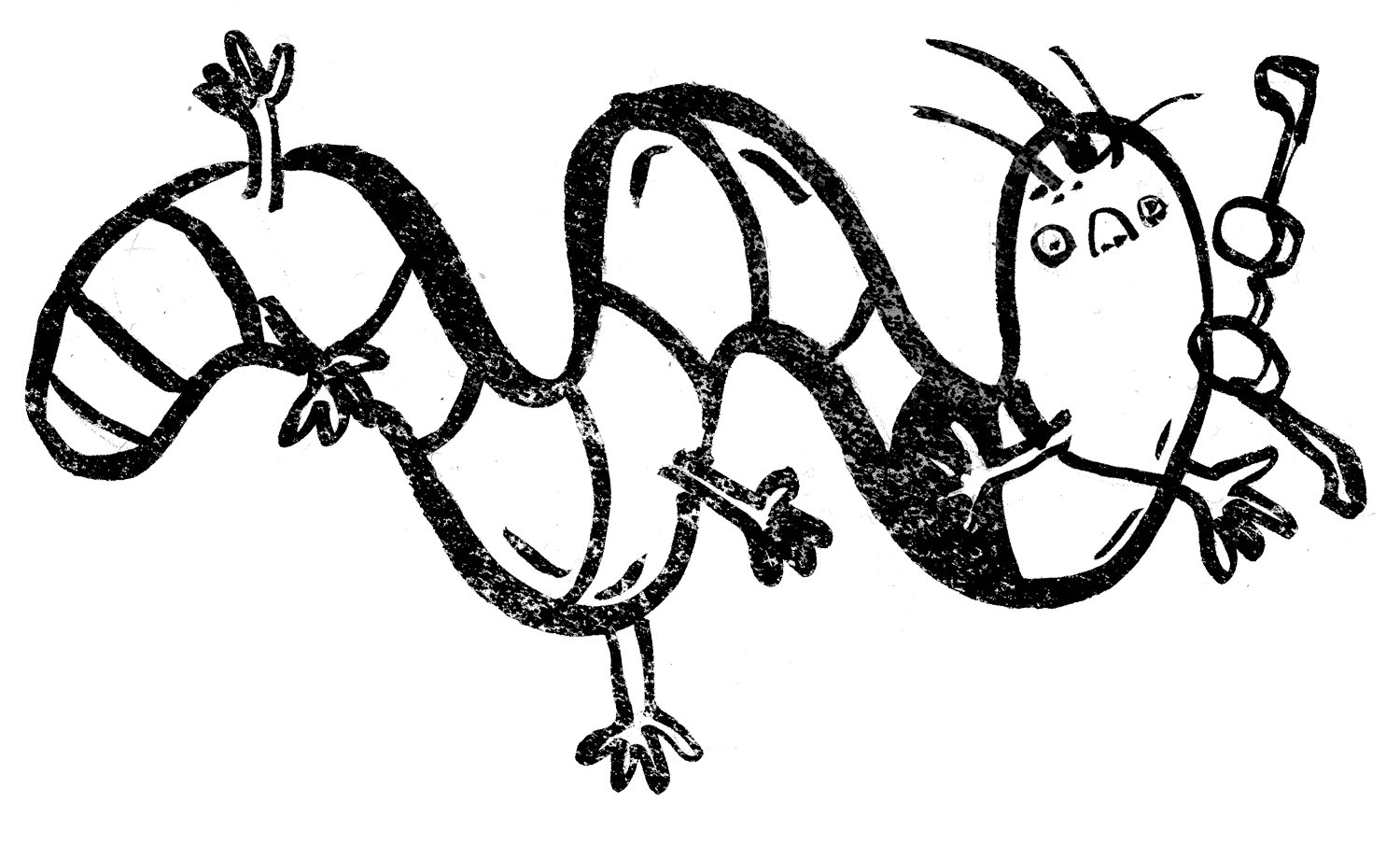
‘Wow, this horse sleigh can go really fast!’
Fortunately, the horse is wearing bells so that people can hear the sleigh approaching from far away. Only the wealthiest people, such as members of the Fugger family, could afford such lavishly painted sleighs.
Perhaps the lady sitting comfortably in the sleigh is one of the family. The Fuggers became immensely rich through trade and banking. They even lent money to the Emperor, which made them very powerful.
A shopping paradise – treasures from afar
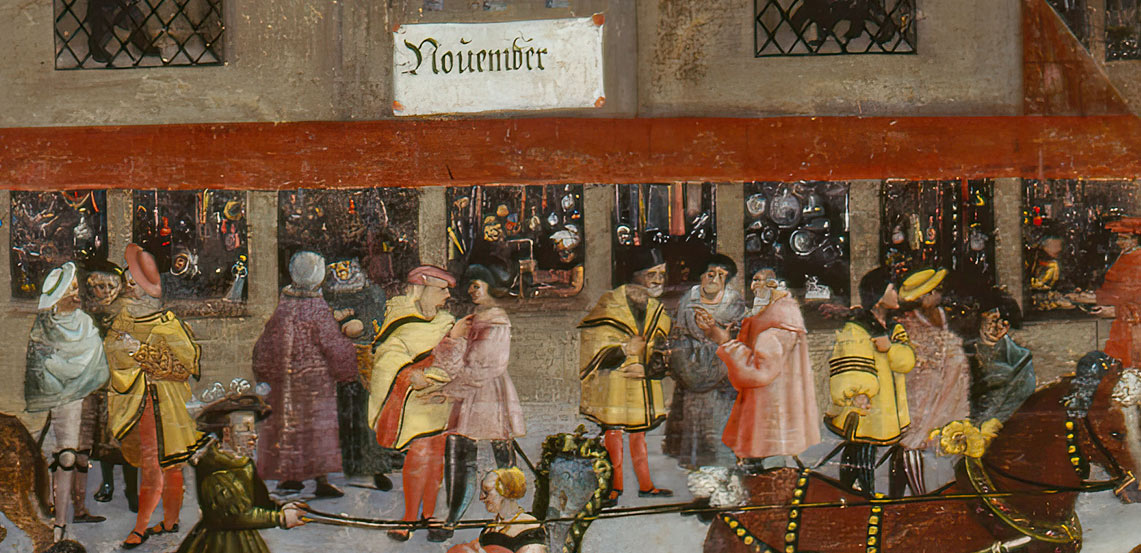
Detail from: Heinrich Vogtherr the Younger, Labours of the Month with the Perlach Tower and the Old Town Hall, c.1540
There are lots of different things to buy in the shops at the base of the tower, for instance statues of saints or parts of armour. The armour made in Augsburg was particularly expensive and magnificently decorated. Even the Emperor ordered his armour there. Precious things from other parts of the world could also be bought in Augsburg: for example, pearls, gems, or works of art.
‘It’s amazing what you can buy here ˗ I’ll see if I can find an interesting book’

Instruction
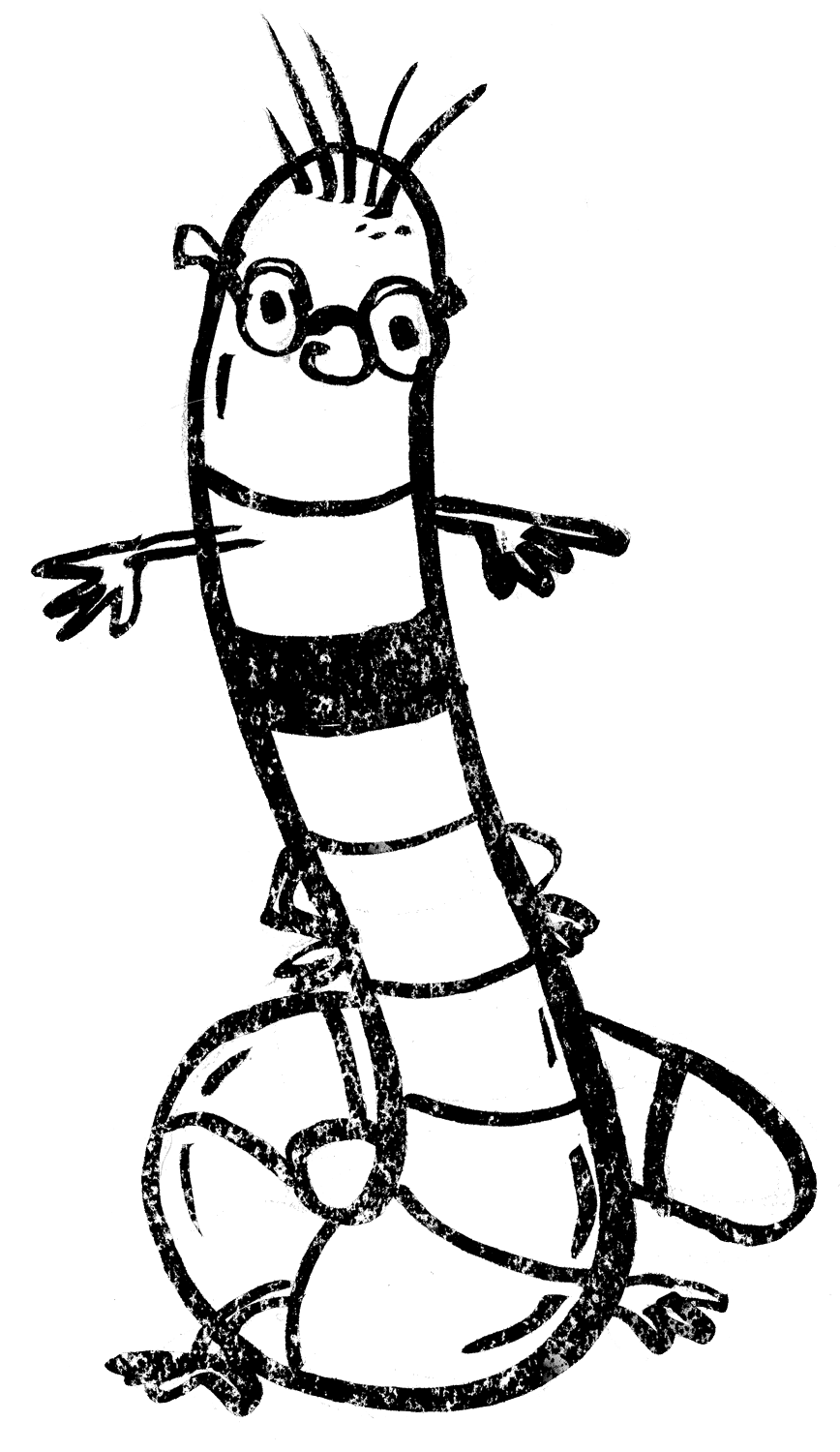
Bib the Bookworm loves to play hide-and-seek. He has found six different hiding places in this picture.
Click on him to learn more about how people lived in Augsburg 500 years ago. Have fun searching for him!